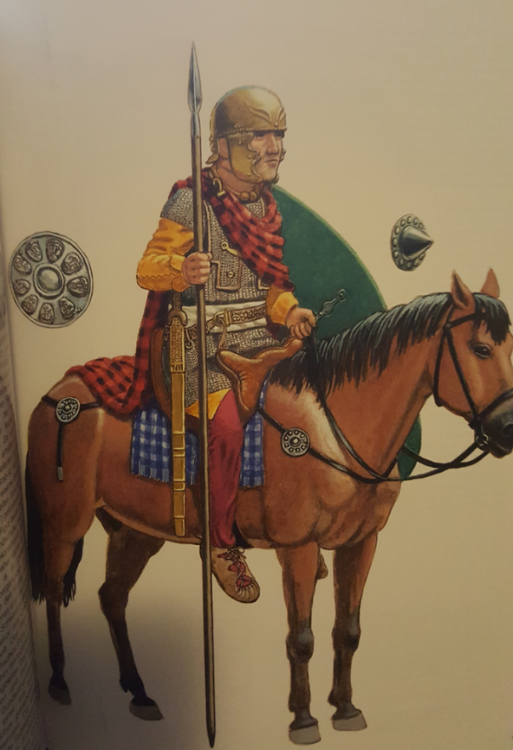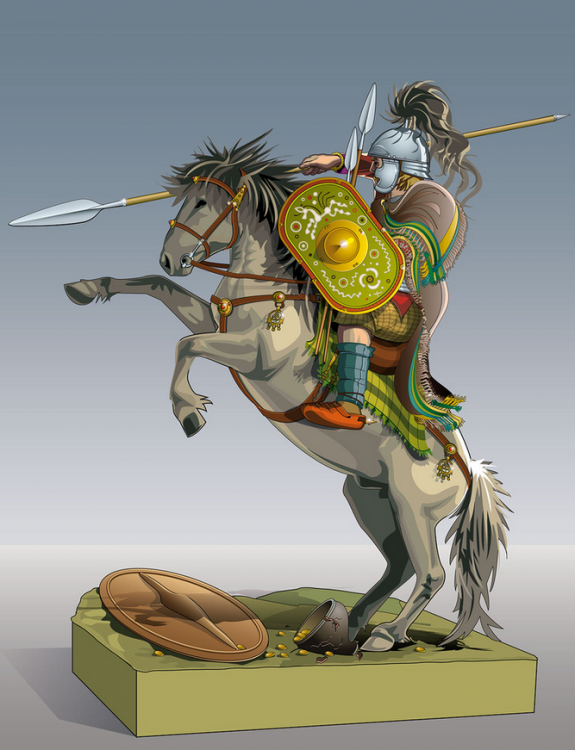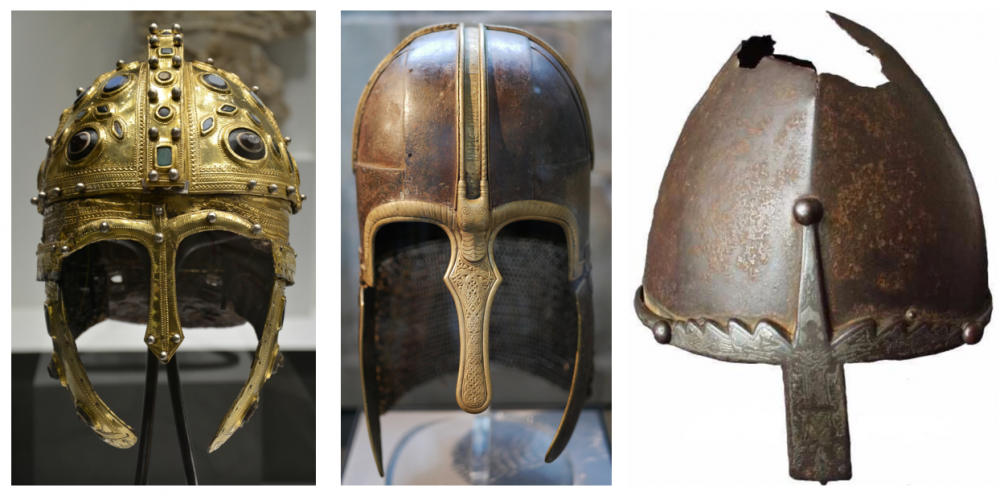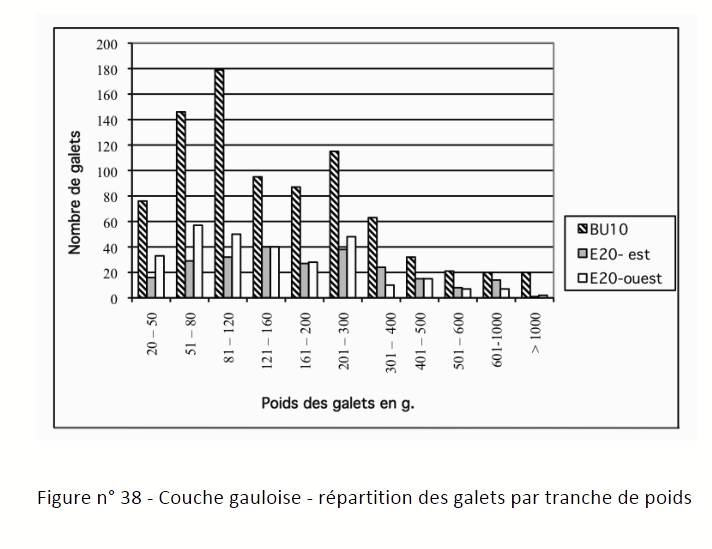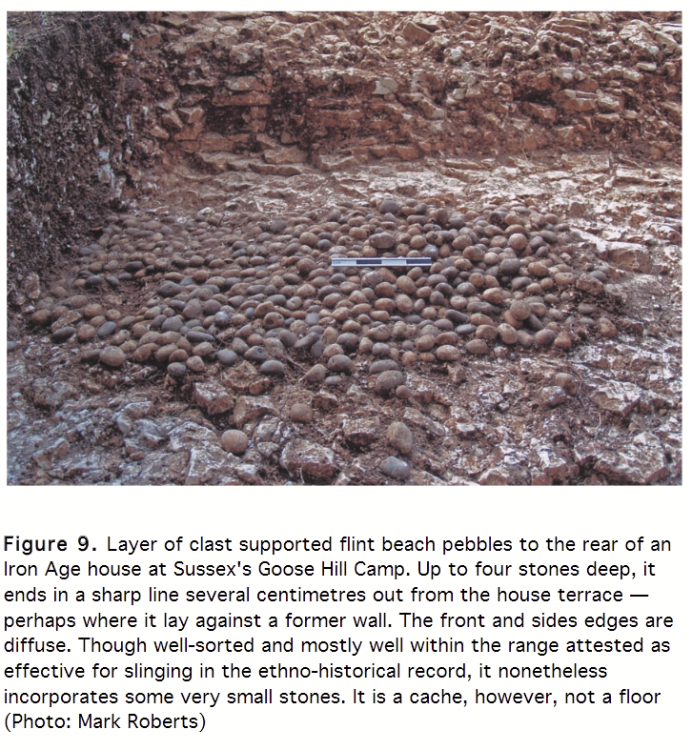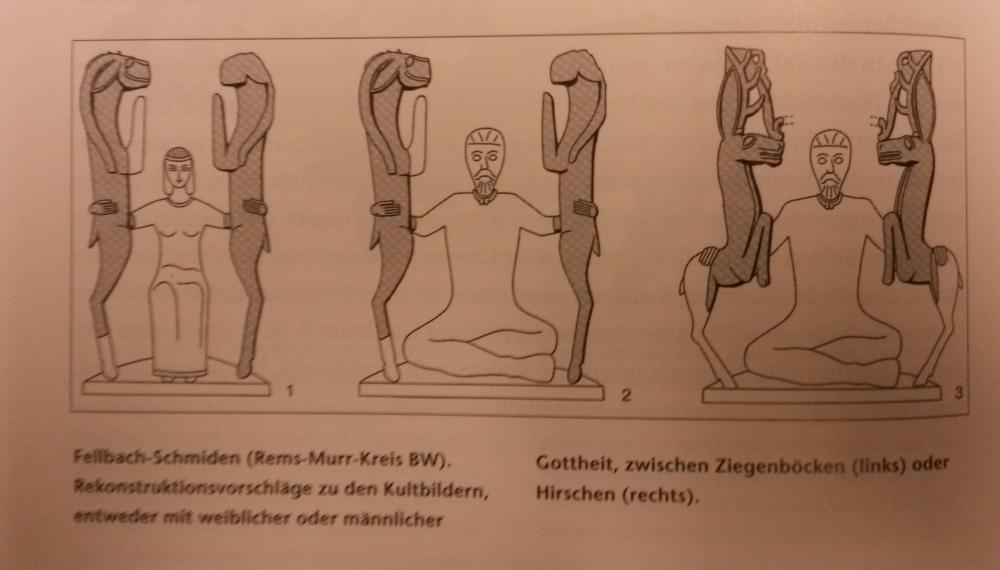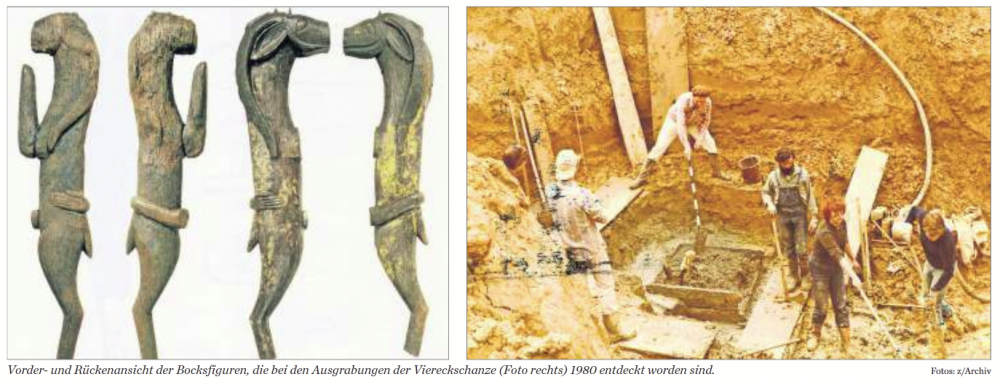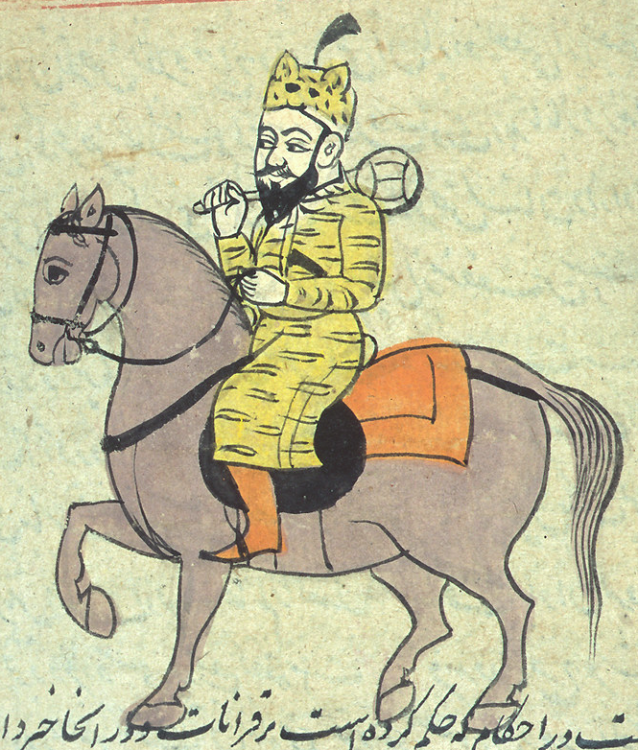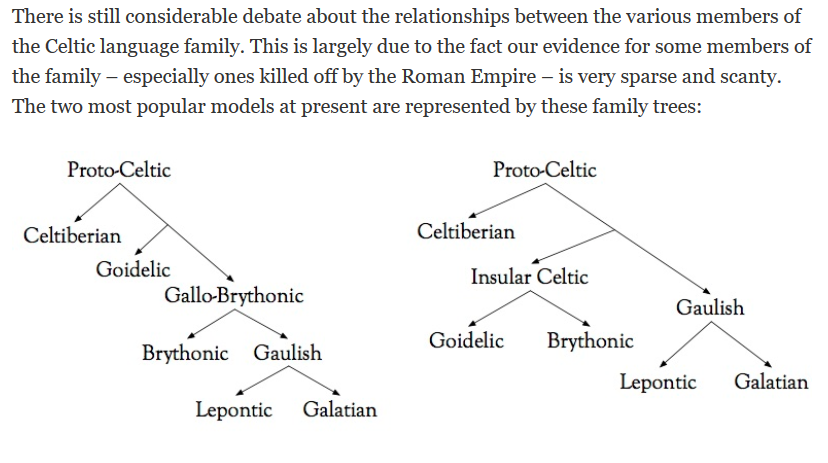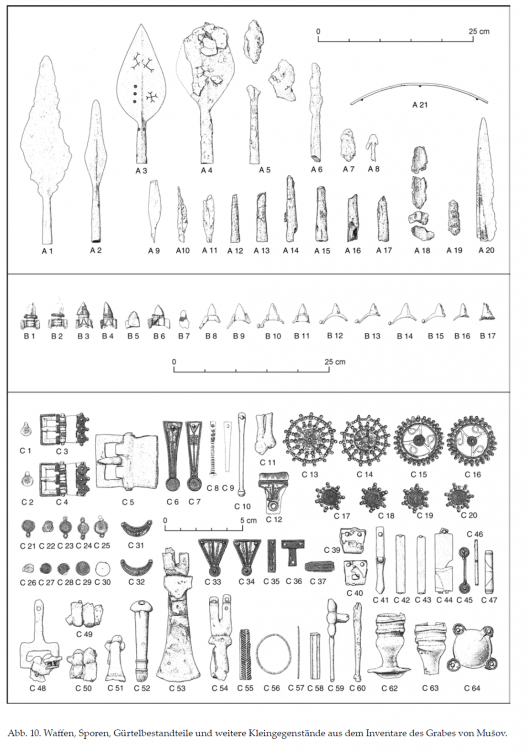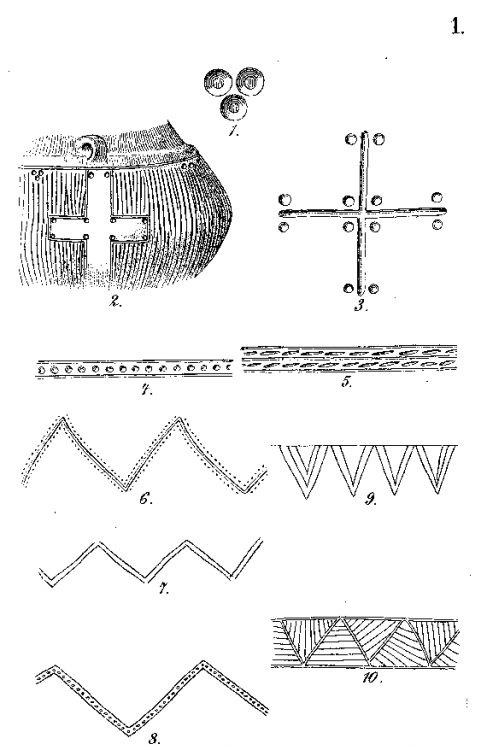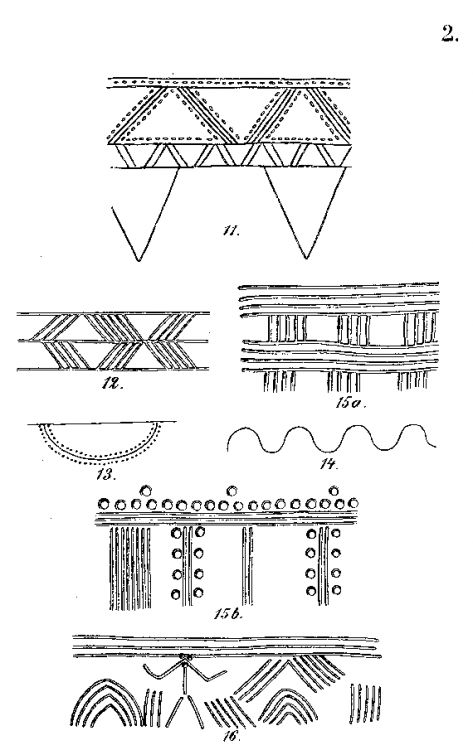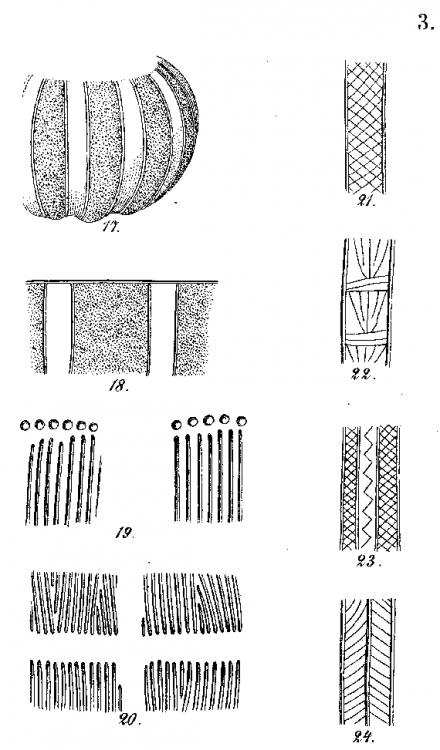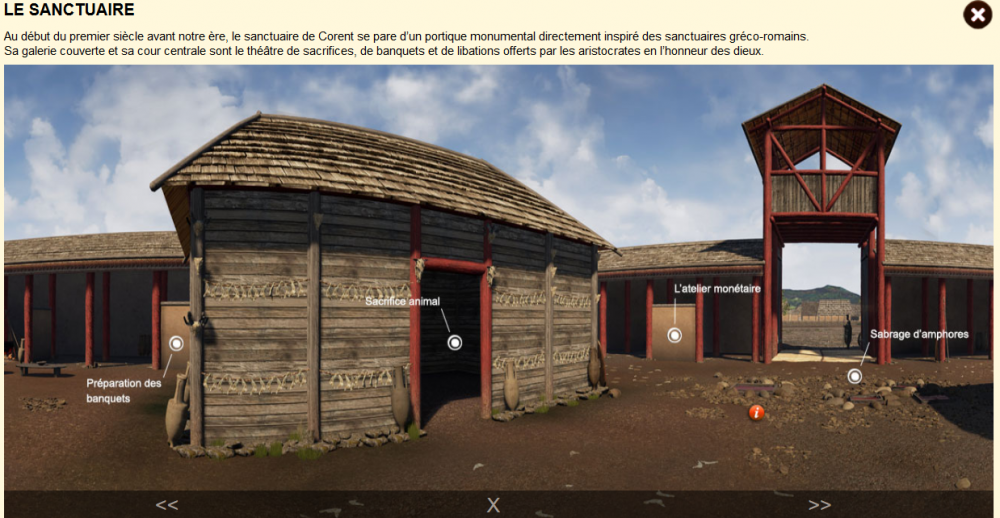-
Posts
2.401 -
Joined
-
Last visited
-
Days Won
82
Everything posted by Genava55
-
It could be mounted infantry indeed. Hard to know exactly. There is another account as well Book 1, Ch. 46: "While these things are being transacted in the conference it was announced to Caesar that the cavalry of Ariovistus were approaching nearer the mound, and were riding up to our men, and casting stones and weapons at them." Clearly regional units should be an important asset. Itself, the Suebian tribe doesn't seem to have such an amazing and diversified roster but by including other neighboring tribes it becomes more solid and balanced.
-
Thanks for the video. Interesting opinion. Personally I see the Tanderagee Idol representing some sort of Late Roman, Anglo-Saxon or Viking helmet: So probably not the better fit for the faction. I would be careful with the Janus figure because it could be hair represented on the statue. You can visualize the statue in 3D here: https://sketchfab.com/3d-models/boa-island-janus-figure-ce8038c2d4594b6b9b14a520f0bc0b23 That's very interesting. Thank you very much. It could be a kind of crown or ceremonial hat indeed. Why not using it.
-
Personnaly I would prefer to portray evolving factions than splitting in several periods the civs. I would prefer a Roman republic evolving from the second Latin War to Antony's Civil War, with reforms and technologies available. About the Roman Empire, it could be indeed interesting to split it in two because each period has very interesting development in their own, culturally, religiously and militarly speaking.
-
.thumb.jpg.b21ca1d0c15fb56b42c39b25a0a40815.jpg)
Civ: Germans (Cimbri, Suebians, Goths)
Genava55 replied to wowgetoffyourcellphone's topic in Delenda Est
By the way http://tollundmanden.one/?lang=en -
Balearic slingers yes, they used lead it is certain, we found lead bullets in France from the Gallic Wars. Caesar used them a lot during his campaigns. But I was speaking generally about the size of the projectile, not their type. In Gallic context we found a huge variety of size for the sling ammunition. Stones are generally between 50 and 120 g and there are examples with higher weight. In the British Isles, at Sussex, there are some case of very well sorted stones probably used for slingshots, mostly between 30 and 90 g.
-
Yep, it is a typo when I copy pasted the reference. Thank you for the correction. The non-Greek slingers seem to use very different size of projectile. In the case of the account from Xenophon, the Persian slingers were using very heavy projectiles (as you noticed, they are various projectiles for different roles): "Now I am told that there are Rhodians in our army, that most of them understand the use of the sling, and that their missile carries no less than twice as far as those from the Persian slings. For the latter have only a short range because the stones that are used in them are as large as the hand can hold; the Rhodians, however, are versed also in the art of slinging leaden bullets." This is what is difficult about the sling, there are various applications and traditions in its use.
-
Slinger much stronger against units without shields (archers, slingers etc.)? Javelin much stronger against unit with shield (infantry, cavalry)? Archer stronger against both but less than slingers and javelineers respectively?
-
.thumb.jpg.b21ca1d0c15fb56b42c39b25a0a40815.jpg)
Civ: Germans (Cimbri, Suebians, Goths)
Genava55 replied to wowgetoffyourcellphone's topic in Delenda Est
@Ultimate Aurelian -
The Gallic Wars, Book 5, Ch. 43: On the seventh day of the attack, a very high wind having sprung up, they began to discharge by their slings hot balls made of burned or hardened clay, and heated javelins, upon the huts, which, after the Gallic custom, were thatched with straw. These quickly took fire, and by the violence of the wind, scattered their flames in every part of the camp. By the way about the range: https://en.wikipedia.org/wiki/Sling_(weapon)#Today
-
Highly skilled slingers like those from Rhodes and the Balneares used metallic projectile. And indeed, stone cost is not really justified even for the regular ones. Historically, Rhodian slingers have been used to counter Persian archers. See Xenophon in Anabasis 111.3. 7 to 20.
-
.thumb.jpg.b21ca1d0c15fb56b42c39b25a0a40815.jpg)
Civ: Germans (Cimbri, Suebians, Goths)
Genava55 replied to wowgetoffyourcellphone's topic in Delenda Est
https://en.wikipedia.org/wiki/Opfermoor_Vogtei https://www.weltbild.de/artikel/kalender/opfermoor-vogtei-am-mittelpunkt-deutschlands-wandkalender_24502306-1 https://www.biologie-seite.de/Biologie/Anthropomorphe_Pfahlgötter -
In Fellbach-Schmiden, Germany, some kind of wooden reliefs or statues have been found https://bawue.museum-digital.de/index.php?t=objekt&oges=99 https://bawue.museum-digital.de/index.php?t=objekt&oges=575&cachesLoaded=true Some reconstructions have been proposed: One of them could represent Cernunnos. It isn't impossible it had horns as well. It's nitpicking, it is not important if you have more urgent stuff to do.
-
With the Celts it is a bit more complicated. For example the two statues found in Switzerland, at Yverdon-les-Bains and Genève (Geneva) has been found outdoor. The former outside the rampart, the latter close to the lake shore. There were probably statues in sanctuaries, but we know there were statues outside as well. Because of a particular feature (see following). Not at all. It is further complicated because the ancestor cult at this time is much more active in Celtic and Germanic societies than it is in Roman and Greek ones. In addition, we call it sanctuary but it is actually closer to the Greek concept of temenos, which could have various function. We do not know if this building and area were dedicated to one or several gods or to an ancestor or if the religious function was kinda secondary. Isn't this wooden statue already planned for the Gallic temple? Simply asking. About the wonder, if you switch, I am fine with that.
-
Not that uncommon to portray such big maces, especially for cavalrymen, in the later eras (upper left): Although it is probably an officer and ceremonial type of mace. It is also depicted in religious interpretation of historical events in Mughal India:
-
I assure you it is far too heavy for anything. Even to cut wood. Even a medieval two-handed war hammer doesn't reach 5 kilograms. Nope. Axes are rarely used on the battlefield since the beginning of the iron age. Maybe the Germans could have thrown wooden staffs and axes but there are no conclusive evidence before the Franks and their francisca. However, the francisca is used like the Roman pilum. Dedicated units throwing axes continuously never existed.
-
Quite impractical.
-
Slightly outside the period but interesting https://www.ancient-origins.net/news-history-archaeology/two-rare-swords-found-6th-century-underground-tunnel-tomb-japan-006879 https://decouvertes-archeologiques.blogspot.com/2017/02/la-plus-longue-epee-de-lancien-japon.html?fbclid=IwAR2annmyLp-HF_fzo-Lux4M3W3KMQgubwHVhEyvBxAr2EfO75OHuFjexrBU
-
Nobody knows how and when the Celtic languages splited. This is a very strong debate in linguistic notably between the models of Karl Horst Schmidt and Kim McCone. Yes! The difference is that the first video is 100% based on non-existent material while the second is based on existent material, real written record in Gaulish. The Common Brittonic video is based on linguistic reconstruction from an amateur. Those texts do not exist in the historical records. It depends on the hypothesis and the model of the person carrying out the reconstruction. It is in your mind. You are comparing Gaulish written during the Gallo-Roman period with a non-existent reconstruction of Brittonic. I am not a linguist, so I rely on the opinion of expert. In the case of Delamarre, he clearly states on the first page of his dictionary that he considers the Celtic language spoken in Southern Britain during the Late Iron Age (100 BC - AD 100) as only a variant of the language spoken in the continent.
-
At this time the Brittonic/Brythonic languages are very little different to the Continental Celtic or Gaulish. It is mostly a matter of stress accent. Remember that Old Irish, Old Welsh and Old Breton are Medieval languages. The language spoke by the Britons is labeled as Common Brittonic: https://en.wikipedia.org/wiki/Common_Brittonic As noted by Tacitus: So personally I see no issue to use Gaulish for both factions. From the toponyms and the ethnonyms, I see little difference as well with Gaulish. Iberian language is probably non-indo-european as well. Sadly Iberian is not understandable, we do not know enough the vocabulary and the structure of the language. Furthermore we have no sister language to do a comparison. There is a theory that Basque has some links with the Iberian language, so it is the best we can use at the moment: https://es.wikipedia.org/wiki/Vascoiberismo
-
I use this dictionary from Delamarre, French is my mother tongue. Those are the latinized version. And brogae is actually what you can see in Allobroges, I don't think it means "field" but "land", "country" or even "territory". The Gallic dictionaries generally analyzes Galatian, Lepotian and Gallic as a whole. Sometimes including Brittonic languages. I will answer further later.
-
I like it. I would say I find a bit weird the upper part of the inner houses with the wicker still visible, without cover wattle-and-daube is pretty useless. Maybe it could be an opportunity to add player color on the upper part (or the lower part) of the house as well. The contrast between white and colored can be appealing. This is a place of gathering and feasting, an occasion for Gallic aristocrats and elected magistrates (there were elected positions in the Gallic society) to display their wealth in the purpose to get more support (politically, economically and military). We know these particular events were the opportunity to drink wine and indeed there are a lot of amphora remains found in the sanctuary of Corent. Even holes in the ground where wine was poured in, probably as a symbolic ritual to share it with the underground deities. Finally we found another striking feature on the site, coins and tools to produce coins. Maybe the coins were distributed to the guests. I am simply saying these things to give you idea if you want to add more little things. http://www.luern.fr/index.php?mod=scientifique&act=sanctuaire&id=47&img=32


